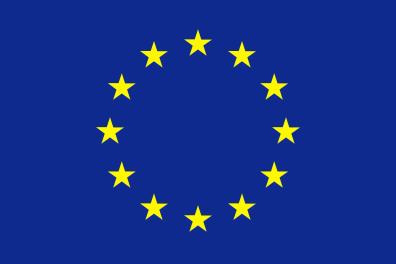Donate to Support Supercluster
Your support makes the Astronaut Database and Launch Tracker possible, and keeps all Supercluster content free.
SUPPORTSupercluster on Patreon
Your support makes the Astronaut Database and Launch Tracker possible, and keeps all Supercluster content free.
SUPPORTThis goes
to space
Galileo
Galileo is a global navigation satellite system (GNSS) that went live in 2016, created by the European Union through the European Space Agency (ESA), operated by the European Union Agency for the Space Programme (EUSPA), headquartered in Prague, Czechia, with two ground operations centres in Fucino, Italy, and Oberpfaffenhofen, Germany. The €10 billion project is named after the Italian astronomer Galileo Galilei.
One of the aims of Galileo is to provide an independent high-precision positioning system so European political and military authorities do not have to rely on the US GPS, or the Russian GLONASS systems, which could be disabled or degraded by their operators at any time. The use of basic (lower-precision) Galileo services is free and open to everyone. A fully encrypted higher-precision service is available for free to government-authorized users. Galileo is also to provide a new global search and rescue (SAR) function as part of the MEOSAR system.
The first Galileo test satellite GIOVE-A was launched 28 December 2005, while the first satellite to be part of the operational system was launched on 21 October 2011. Galileo started offering Early Operational Capability (EOC) on 15 December 2016, providing initial services with a weak signal. In October 2018, four more Galileo satellites were brought online, increasing the number of active satellites to 18. In November 2018, the FCC approved use of Galileo in the US. As of December 2023, there are 23 launched satellites that operate in the constellation, five are not available. It is expected that the next generation of satellites will begin to become operational after 2025 to replace older equipment, which can then be used for backup capabilities.
The Galileo system has a greater accuracy than GPS, having an accuracy of less than 1 m when using broadcast ephemeris (GPS: 3 m) and a signal-in-space ranging error (SISRE) of 1.6 cm (GPS: 2.3 cm) when using real-time corrections for satellite orbits and clocks.
Courtesy of Wikipedia. Image courtesy of ESA.

On this
rocket
Soyuz 2.1b/Fregat
Meet Roscosmos’s 21st-century upgrade of the Soyuz rocket: the Soyuz 2.1b.
One of the most significant advancements in this variant is the completely digital flight control system, a major technological leap for a rocket family originally designed in the 1960s.
Specs
Height: 46.3 m (152 ft)
Diameter: 2.95 m (9 ft 8 in)
Mass: 312,000 kg (688,000 lb)
Stages: 2 or 3
The digital flight control system enhances launch precision and target accuracy, making the Soyuz 2.1b more reliable for a wide range of missions.
Additionally, this variant features an upgraded Blok-I second-stage engine, the RD-0124, which provides improved performance and efficiency over earlier models.
The Soyuz 2.1b was the second of three Soyuz 2 variants to enter service, making its debut launch on December 27, 2006.
Two Names, Two Flags
This rocket flies under two different names, depending on the launch operator:
- Soyuz 2.1b: When launching under Roscosmos from Baikonur or Plesetsk.
- Soyuz ST-B: When sold to Arianespace for European launches. This version includes European modifications, such as a European payload adapter and a European flight termination system.
Image: ESA

From this
launch site
ELS - Guiana Space Centre - Kourou, French Guiana
The Guiana Space Center (French: Centre Spatial Guyanais (CSG)) is a French and European spaceport located near Kourou in French Guiana near the northern tip of South America. The facility has been operational since 1968 and host launches for the European Space Agency (ESA), the French National Centre for Space Studies, and commercial companies Arianespace and Azercosmos.
A total of 9 different rocket types have launched from the Guiana Space Centre, including three active rockets and six retired vehicles.
The current rocket fleet at CSG is comprised of the Ariane 5 for heavy payloads, the Russian-provided Soyuz for medium-mass payloads, and Vega for smaller mass payloads.
The Ariane 6, currently under development, will launch from CSG beginning in the early 2020s.

GET THE SUPERCLUSTER APP
THE SUPERCLUSTER PODCAST
A podcast exploring the amazing milestones that changed space history, the wildest ideas that drive our future, and every development in this new Golden Age of Space.
Donate to support
Your support makes the Astronaut Database and Launch Tracker possible, and keeps all Supercluster content free.
SupportCOPYRIGHT 2021 SUPERCLUSTER LLC




